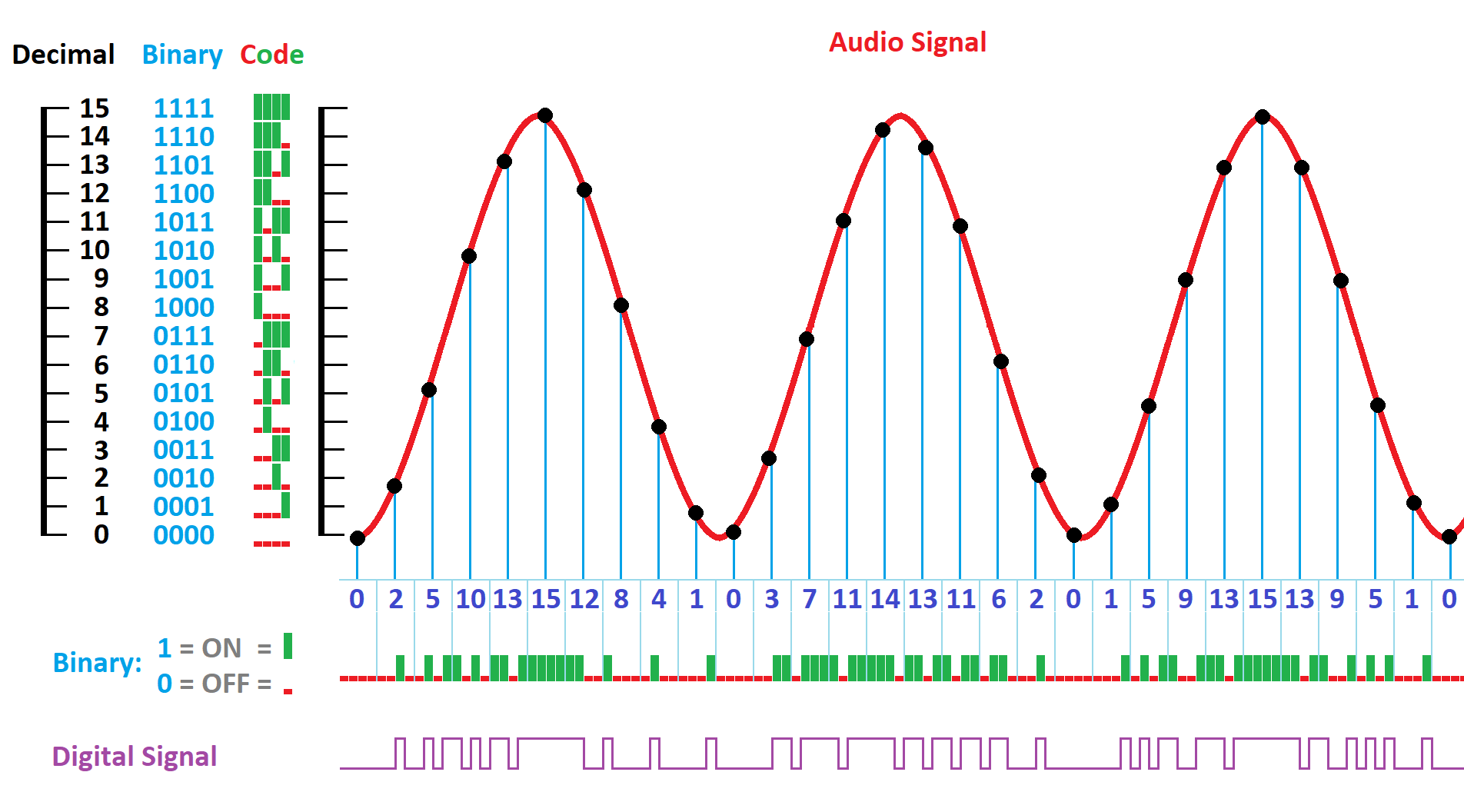The advent of Digital Audio has been a very important development for many industries, including film and television. In traditional film reels, the audio would be printed onto a thin strip at the edge of the celluloid as light and dark patches or shapes, imitating the peaks and troughs of a vinyl record groove. When Digital Audio became available, it could be printed onto the film reel in a similar way with small dark and clear dots representing the ones and zeros, a bit like a tiny continuous QR code.
Since film-makers wanted eventually to digitize both video and audio together, this would require a huge amount of data storage for every scene, so methods were being sought to try to reduce the size of data per project and make it easier to store and transfer the video and audio. This task led to the launch of an alliance called the "Motion Pictures Experts Group" (MPEG), which oversaw the development of data compression formats for both video and audio.
The techniques used for video and audio data compression aim to minimise the repetitive and predictable elements of the signal to reduce the amount of overall data needed. To describe this using a metaphor…
It takes longer to say… “Do this… then do it again… then do it again… then do it again”…
... than it does to say….“Do this four times”
In reality, the compacting of this information is much more sophisticated and uses phenomena called “psychovisual and psychoacoustic redundancy”, which means that our eyes and ears do not scrutinise every pixel of every frame and every frequency of every sound as it is played back. The compression algorithm predicts what we need to see and hear and provides only the necessary data.
The resulting video formats became known progressively as MPEG-1, MPEG-2 and MPEG-4 (number 3 was scrapped). When stored as a data file, these are given the file extensions “.mpg” or “.mp4”.
MPEG encoding also provides additional layers within the data stream for audio, and the most prevalent of these is “MPEG-2 layer 3”, which has the file extension “.mp3”. The high quality and small storage requirements of mp3 has led it to be used extensively outside of the motion picture industry as a valid audio format in its own right. The amount of compression used in mp3 audio can vary (the bit rate can be selected from 96kbps to 320kbps) and lower bitrates are more “lossy” (i.e. losing more detail and quality), but even at the highest bit-rate, it takes up around a fifth of the data that audio stored on a CD would need. This has brought us to the point where we can carry an entire music collection on a very small microSD card to play back through a smart phone or mp3 player.
In addition to MP3, further digital audio compression types have been developed, such as AAC (proprietary to Apple), FLAC, OGG and WMA. Some formats are lossless (no lost audio detail) but will have larger file sizes. Files with the extension “.wav” are uncompressed audio and have the largest file size.






